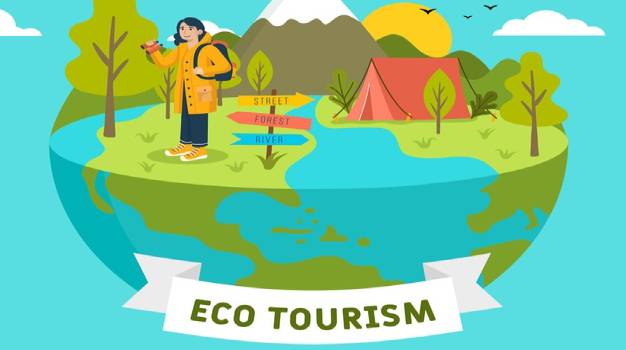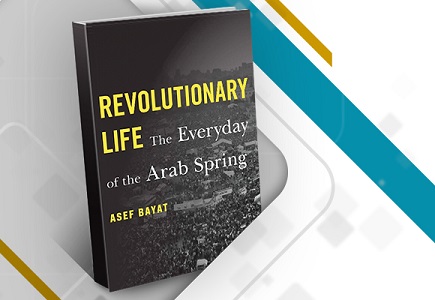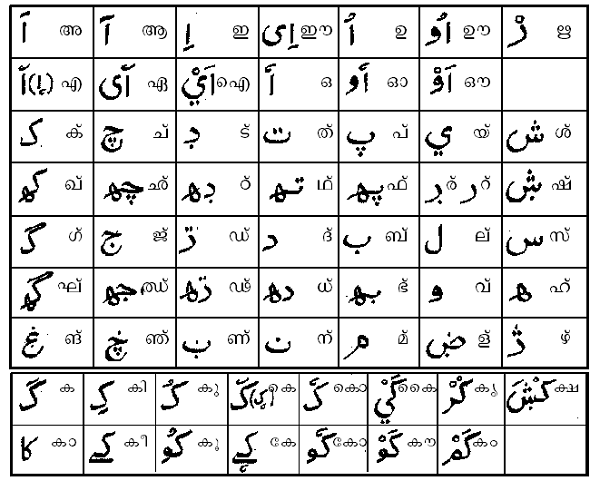
In the present era, the tourism industry has an important role in transforming society and economy. It has great potential as it bring social, cultural, and infrastructural development. Tourism contributes an economic development all over the world. While focusing on socially responsible travel, personal growth, and environmental sustainability the ecotourism has a dominant role in Kerala. The world’s first teak museum which provides extensive information of value historically, artistically, and scientifically situating in Kerala is a core of ecotourism.
The present study focuses on the perception of people towards ecotourism and to know the factors attracting them to visit teak museum. The study was conducted among 60 respondents in Nilambur area, by choosing the samples through convenient sampling method. To attain the aforesaid purpose a well-structured questionnaire was administered and analysed using chi-square. The result indicates that, the people felt tourism as a positive impact on preservation and spreads awareness about natural environment. The people have a positive satisfaction on ecotourism also, towards Teak museum.
Key words: Ecotourism, Perception, Teak museum.
INTRODUCTION
Today, ecotourism is a fastest growing area in tourism industry. It is a main segment in Gods own country. Because, Kerala has many destinations which known for their natural beauty, greenery, and a good atmosphere. Ecotourism is a purposeful travel to natural areas to understand the cultural and natural history of environment. It provides more enjoyable experiences and connection with local people also; it helps in understanding the local cultural, social and environmental aspects etc. The International Ecotourism Society defined Ecotourism as responsible travel to Natural area that conserves the environment and improves the welfare of local people.
Eco tourism primarily means, marketing the serene natural habitats as tourism products with an inherent element of nature education. According to WTO, it is considered as the growing market in the industry. Teak museum is an ecotourism potential area in Kerala, located 2 km away from Nilambur, regarded as the first and only one museum in India with extensive root system of a 55 years old Teak tree. It was established on the campus of the sub-centre of Kerala First Research Institute (KFRI) in 1995 because of the historical significance of the Teak to this region.
RATIONALITY OF THE PROBLEM
The tourism industry is a developing segment in the world. It is an enjoyable and entertainment global activity. Ecotourism is the one among them providing an attachment to the environment, as it conserves the environment. Now a days, the gods own country has well-known for ecotourism. Because, Nilambur is a potential area of ecotourism for the first and only one teak museum situated in kerala. Normally an anxiety will bring the people towards an activity. In such sense, many people going to visit the museum, which is famous for the largest teaks in the world. Some of them occasionally visit the museum. Some of them don’t want to visit there once more. So the present study is an attempt to identify that, how the people are attracted to the museum and also to find the satisfaction level of people towards ecotourism through teak museum.
OBJECTIVES OF THE STUDY
To analyse the perception of people towards ecotourism through Teak museum.
To identify the factors attracting people to Teak museum.
REVIEW OF LITERATURE
1. K.ASOORA(2014): She conducted a study on ‘the potential areas in NILAMBURE and found that the ecotourism provides more enjoyable experience for tourist through more meaningful connection with people and greater understanding of local culture, social and environmental issues etc... The study concluded that ecotourism helps the local people for economic development.
2. HAIDER C KARRUR (2014): This study entitled on ‘scope of ecotourism in Kerala’ it is conducted with an object of examine the potentiality and wide scope of ecotourism in region and also to highlight the major ecotourism area study in region. The study expressed that Kerala an unexplored hub for ecotourism is paradise for nature’s love and also found that there is a need to have approximate planning for this destination to provide infrastructure facility for ecotuor4ism development.
3. RANJINI P (2014): This is the study on ‘ecotourism-challenges and opportunities’ it is focused on the challenges and opportunities of ecotourism in Kerala to study the potential of ecotourism in Kerala. This study revealed that ecotourism is being certain by many community and government as a reasonable and national way for economic development and preserving their particular bit for environment. He suggests that if the idea of ecotourism is well planned then it can work beneficiary. If not, then disastrous results to both the environment and people occur.
4. RAGHAVAN VP (2005): According to him, tourism has become a major economic force in the contemporary world. Being a major element of many countries service exports, it has the power to deliver significant international earnings that can be utilised for alleviating poverty. During the period between 1990 and 2002, international tourism arrivals globally grew by 54% and now stand at around 100 million. By 2020, it is expected that this figure will have more than doubled. Global receipts from international tourism amounted to rupees 4.75 billion in 2002.
RESEARCH METHODOLOGY
To achieve the objectives of the study a research methodology is framed. The study is descriptive and analytical in nature. The study makes use of both primary and secondary data. The Primary data are collected by using questionnaire from 60 respondents as a sample size in nilambur area. Theoretical background of the study is collected from various sources which include books, magazines, journals, websites and other related research work.
The data collected from 60 samples are analysed and interpreted by using one way ANOVA to test the hypothesis of there is no significant difference between age and satisfaction of peoples towards ecotourism with special reference to teak museum, Nilambur.
ANALYSIS AND INTERPRETATION
DEMOGRAPHIC PROFILE OF RESPONDENTS
Table 1 depicts the demographic profile of the respondents. The respondents are classified on the basis of age and gender.
Table: 1 Demographic classification
GENDER WISE CLASSIFICATION
Gender No Of Respondent Percentage
Male 29 48%
Female 31 52%
Total 60 100
AGE WISE CLASSIFICATION
Age No Of Respondent Percentage
10-20 10 17%
20-30 27 45%
30-40 11 18%
40-50 5 8%
Above 50 7 12%
Total 60 100
Source: Primary data
Interpretation:
It is inferred from the table of personal information that out of the total respondents taken for the study 48 % of the respondents are males and 52% of the respondents are females. It also illustrate that majority of (45%) the respondents are belong to the age group of 20-30 years. 18% respondents are belong to the age group of 30-40 years. 17% respondents are belong to the 10-20 years.12% respondents are belong to above 50 years. And only 8% are among 40-50 years.
NO.OF TIMES VISITED TEAK MUSEUM BY RESPONDENTS
Table: 2
No. of times No .of respondents Percentage
Only once 19 32%
2-4 times 34 57%
More than 4 times 7 11%
Total 60 100
Source: Primary data
Interpretation:
The above table shows that how much times the people visits teak museum. Majority of the respondents (57%) visits teak museum 2-4 times. 32% respondents visits museum only once and only a 11% respondents visits museum for more than 4 times.
FACTORS ATTRACTED TO TEAK MUSEUM
Table: 3
Factors Weighted Average Rank
World’s first teak museum 526 1
Teak plantation 409 2
Butterfly exhibition 349 3
Taxonomic garden 304 5
Roots and bottom of teak 316 4
Stump of teak 289 6
Garden 265 7
Mini theatre 142 8
Library 107 9
Source: Primary data
Interpretation:
The above table shows various factors, that are attracted the people to visit teak museum. According to their responds, the most influencing factor is the first and only one in the world. Then second most attracting factor is its teak plantation. The third factor is butterfly exhibition. Then, roots and bottom of teak, taxonomic garden, stump of teak, garden, mini theatre, library and so on..
ANALYSIS ON SATISFACTION LEVEL
For the analysis on satisfaction level of people, the corresponding averages are taken, which is shown in the table. A one way ANOVA is conducted to check the significant difference in the satisfaction level among the people having different monthly income.
Table: 4
SL.no Factors 10-20 20-30 30-40 40-50 Above 50
1 Natural beauty 4.5 4.37 4.45 3.6 3.85
2 Entertainment 4.6 4.33 4.45 4 4
3 Exhibition 4.5 4.22 4.18 4.2 4.2
4 Accessibility /convenience 4 4.03 4.45 3.8 3.85
5 Ticket charge 3.4 3.48 3.81 3.6 3.2
6 Environmental awareness 3.4 3.44 3.72 3.6 3
7 Educational experiences 3.8 3.29 3.45 3.6 3.57
8 Historical knowledge 3.7 3.62 3.63 2.4 3.14
9 Handicrafts products 2.4 2.37 2.72 2.2 2.42
Total 34.3 33.5 34.86 31 31.23
Source: Primary data
H0: There is no significant difference between the Age level of people and their satisfaction level towards Teak museum.
H1: There is significant difference between the Age level of people and their satisfaction level towards Teak museum.
The result of ANOVA with 5% level of significance is shown in the ANOVA table given below.
Table: 5
THE ANALYSIS OF VARIANCE TABLE
Source of variation Sum of squares Degree of freedom Mean square
Between samples
Within samples SSC=1.34
SSE=17.13 K-1=4
N-K=40 MSC=0.335
MSE=0.428
Total SST=18.47 N-1=44
F= MSC/MSE
= 0.335/0.428
= 0.782
Degree of freedom = (4, 40)
The table value of F at 5% level of significance for (4, 40) degree of freedom is 2.61. The calculated value of F is less than the table value of F. That means, the table value (2.61) is more than the test value 0.782. Therefore, the null hypothesis is accepted.
That is, there is no significant difference between Age level and satisfaction of the respondents.
CONCLUSION
Ecotourism is an important segment of tourism industry and is a leisure activity which promotes an economic development. It is a latest addition in the tourism industry. Nilambur teak museum provides an outlook to the environment as a potential area of ecotourism. It is the first in the world and only one museum of teak in India. It is a house to the treasures of historical, aesthetic and scientific aspect of Teak. The present study aimed to analyse the perception of people towards Teak museum and also to identify the factors attracting people to there.
The study concluded that, the important attractions of Teak museum are extensive root system, collection of butterflies, teak plantation, gardens, mini auditorium, and library etc. and these factors attracted a number of people to visit there. Major peoples are satisfied with the eco nature of museum and it influences them to visit there once again. Also, the people who wish an entertainment want to go there, Because of providing a lifelong travel experience to visitors who love trees and nature. It helps to attain economic development through the implementation of suitable economic projects and an educational development through historical knowledge and environmental awareness.
REFERENCES
Asoora.K (2014),”Ecotourism-The Potential Areas In Nilambur” International journal of management and commerce innovations.vol2, issue1, pp315-317, April 2014-september 2014.
Mr.Biju (2004),”Ecotourism in Kerala”, South Asian journal of socio political study, vol 12, no: 1, pp94-102.
Mr Periyasami, Varghese Ashish(2010) , “Perception on Tourists visiting Kerala-A microstudy”, Southern economist,vol 18, no:9, January 15,2010 P41-42.
VP Rghavan(2005), “Economy of ecotourism in kerala”,Kerala calling, vol 15, no:2, November- December 2005, PP 40-41.
K.G Mohanlal “Ecotourism in kerala” South Asian journal of socio political studies. Vol 18.
Haider .c.Kerrur(2014), “Scope of ecotourism in kerala”
www.google.com
www.researchpublish.com




